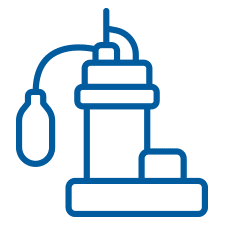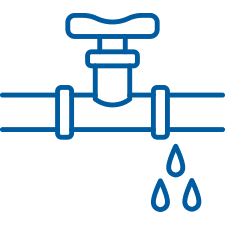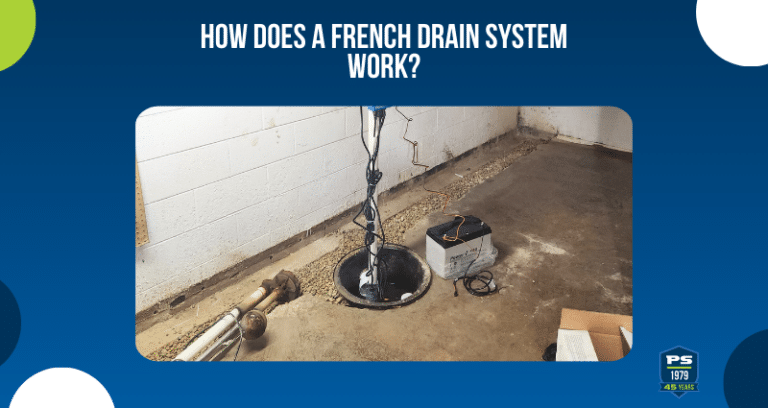
Basements and crawl spaces should stay dry, plain and simple. But when water starts seeping in, homeowners need solutions that work with water, not just against it. That’s where a French drain system comes into play. Keep reading to learn more about how our waterproofing systems are designed to keep Chicago homes dry year-round.
What Is a French Drain System?
A French drain system or interior waterproofing system is designed to redirect water away from your basement or crawl space before it can cause damage. It’s not a single product, but a network of components working together to collect, channel, and remove water from around or beneath your home’s foundation.
At its core, the system includes:
Drain tile (a perforated pipe)
Gravel or aggregate for filtration
Sump basin and sump pump to move water away
Optional battery backup sump pump for extra protection
Why You Need One
Without a reliable drainage and waterproofing system, water can lead to serious problems:
Foundation cracks
Mold and mildew growth
Damage to personal belongings
Poor indoor air quality
A professionally designed and installed interior waterproofing solution can protect your home’s structure and prevent water damage. This is especially important if you are considering finishing your basement.
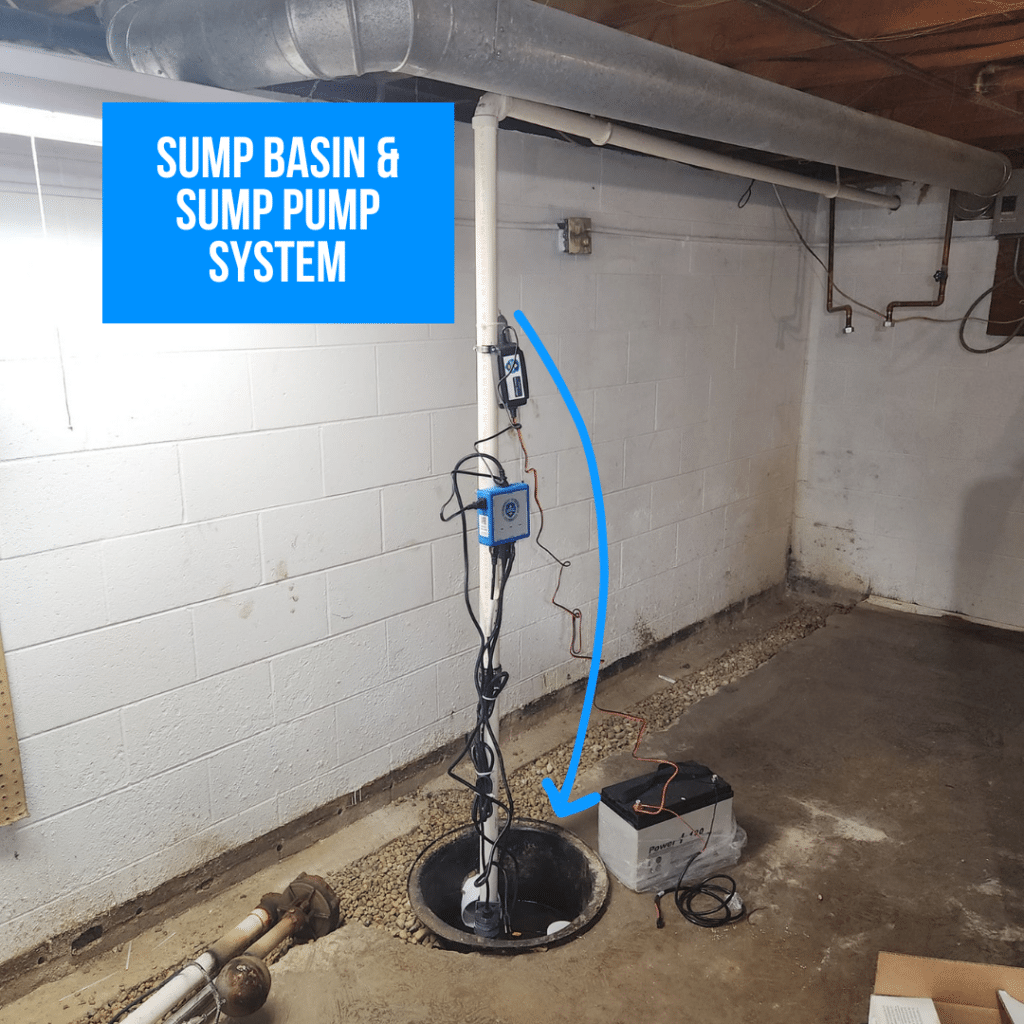
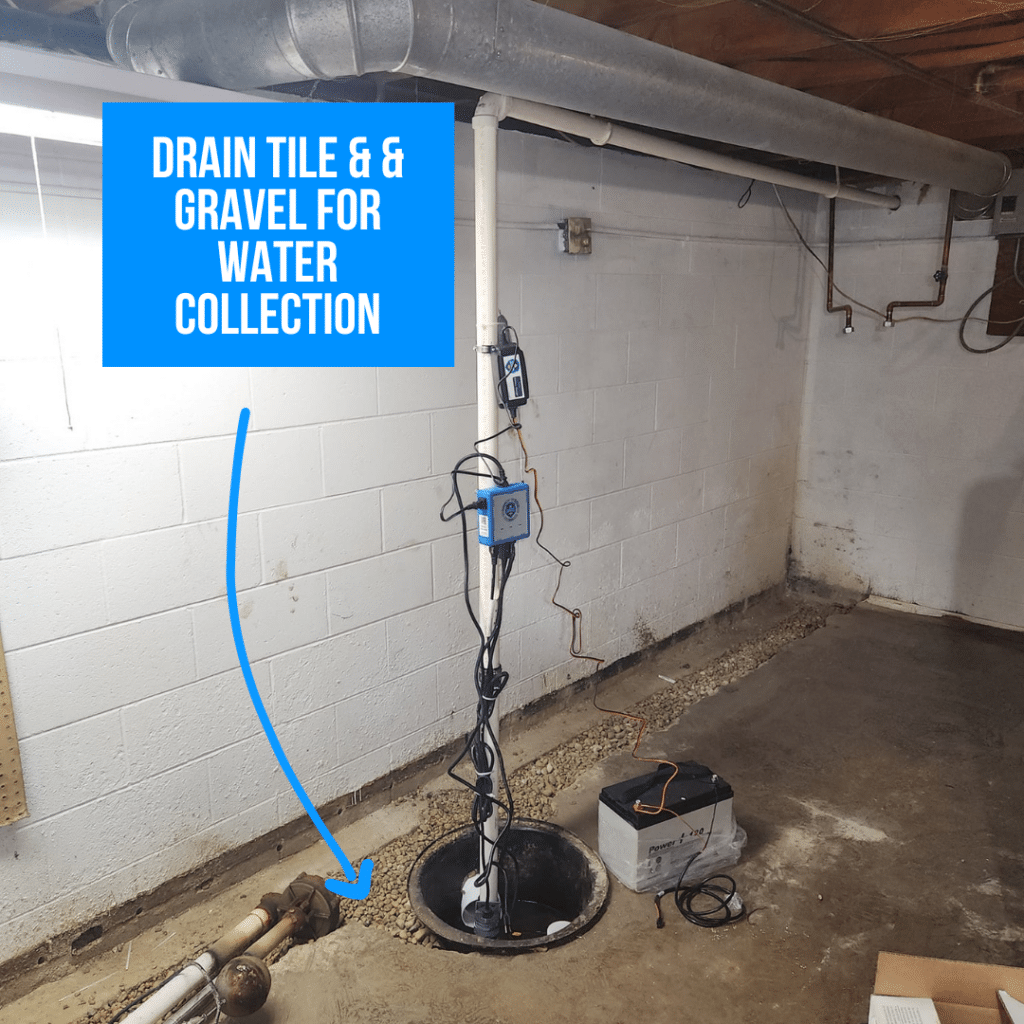
How Our Waterproofing Systems Work
1. Water Enters the Drain Tile
When water builds up around your foundation—whether from heavy rain, poor grading, or hydrostatic pressure—it naturally seeks the path of least resistance. The drain tile, installed along the interior perimeter of the basement floor or crawl space, collects this water. The perforations in the pipe allow water to enter while keeping out soil and debris.
2. Water Is Channeled to the Sump Basin
Once inside the drain tile, the water flows by gravity into the sump basin. This basin sits below your basement floor and serves as a collection point for the incoming water.
3. The Sump Pump Takes Over
When the water level in the sump basin reaches a certain height, the sump pump automatically kicks on. It pumps the water up and out of the home, usually releasing it into a storm drain or another appropriate drainage location away from your foundation.
4. Backup Protection with a Battery Backup Sump Pump
If the power goes out during a storm—or if the main sump pump ever fails—a battery backup sump pump activates. This ensures that water is still removed from the sump basin even when electricity isn’t available. It’s a critical layer of protection for homes that experience frequent storms or power outages.
When Should You Invest in Waterproofing Vs. a Dehumidifier?
If your basement or crawl space has persistent water seepage issues, the problem is likely a waterproofing issue instead of a humidity issue. Waterproofing your basement prevents moisture intrusion at the source, making it easier to control humidity levels.
Professional waterproofing solutions include:
Perma-Seal Can Help You Find the Best Solution for Your Basement
If you’re struggling with water seepage in your basement or crawl space, Perma-Seal can help. Call us today at 800-421-7325 or request a free consultation online!






